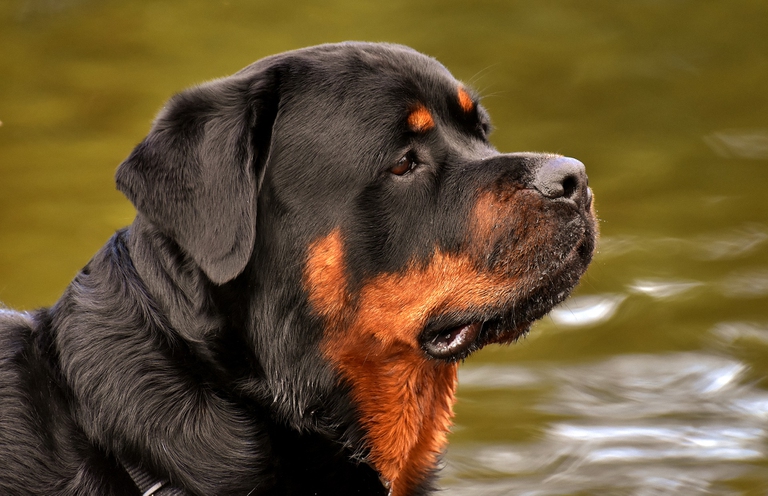https://www.lifegate.it/bassotti
- |
- Dachshunds were born in Germany selected for badger hunting.
- Over the years they have also become excellent companion dogs.
- Their morphology, however, is often the cause of osteoarticular diseases and the dreaded disc herniation.
Dachshunds join the list – decidedly increasingly long – of breeds at risk due to health problems directly resulting from a breeding selection bordering on the absurd.They are companions in misfortune with these dogs Germans too bulldog, i pugs, i cavalier king charles spaniel, up to the various ones brachycephalic breeds fashionable despite the pathologies that afflict its existence.But let's take a step back and begin to discover these sausage-shaped dogs which, in the beginning, were supposed to be faithful and useful companions to man, characterized by a truly enviable state of health.
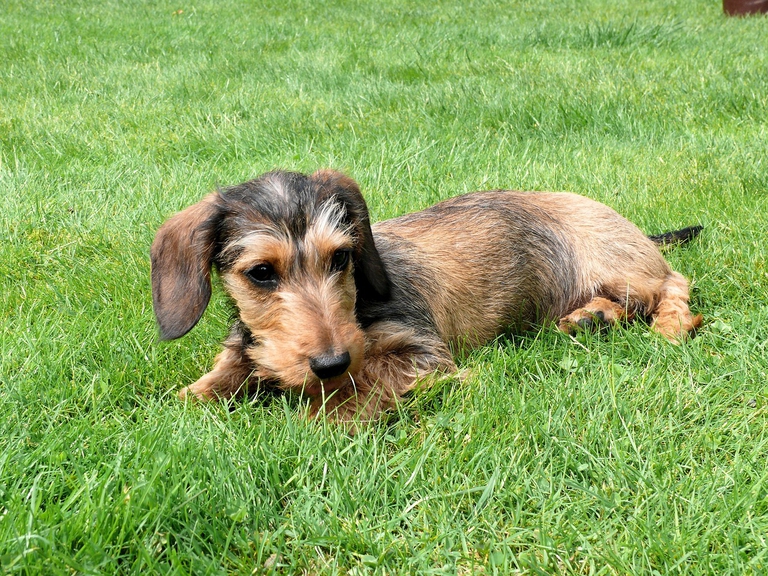
Dachshunds and their history
Dachshunds could also be among the breeds subject to a breeding ban in their native country Germany.The latest draft of the animal protection law aims, in fact, to repress breeding through torture, or the reproduction of dogs with traits that cause pain, suffering or physical damage.And that could include more brachycephalic And toy, but also the dachshund “due to their short legs classified as an abnormality” with serious harm to health and well-being.If you look at the historical images of these dogs at the end of the nineteenth century, you will notice how they had longer legs and a shorter torso, without losing their characteristic sausage conformation.It was, in fact, a breed selected for hunting various types of rodents infesting homes and countryside and its morphology was strictly established for the intended task.But nowadays, the dachshund is no longer a den dog, but a metropolitan companion who must be handled and treated like a handbag pet, easy to look after and even easier to carry around.It's a shame, however, that in this way the poor dachshund has lost his health and life expectancy.
Some writers and experts have theorized that the first roots of the breed can be traced back to ancient times Egypt, in which engravings depicting dogs with small paws were found.Recent discoveries about mummified remains of similar animals (extracted from ancient funerary urns) may lend credibility to this theory.In its modern incarnation, the dachshund is a creation of German breeders and includes typical elements of hounds And German terriers, French And English.The subjects of this breed were bred in royal courts throughout Europe, including that of Queen Victoria, particularly in love with this small but courageous dog.
Nowadays the breed, in its varieties described by a single standard, is the only one belonging to the 4th group of the classification of FCI.The various types of dachshunds are essentially distinguished by size (standard, dwarf and kaninchen) and length and texture of the hair (short, long or hard).However, they all have in common the same character types, the same hereditary and genetic diseases, and the main rules regarding maintenance, care and breeding.

The harlequin dachshund, a top new entry
In recent years there has been an increasingly marked demand for a specific type of dachshund: the harlequin.With its spotted coat, this dog is a variation on the breed theme.The characteristic color spots are the result of the action of the gene “merle”, which affects the pigmentation of the skin and coat.This gene is dominant, so it will be possible to obtain a harlequin dachshund even from the first generation, with only one parent expressing it.However, recent years have seen the emergence of a dog trend of this type, and it is not limited only to dachshunds.Almost all herding breeds, for example, can express it, with various shades of color and a particular depigmentation of the eye.Both in these types and in the harlequin dachshund, two merle parents can, however, have a litter that presents potentially serious health problems.
In fact, it is strongly discouraged to mate two specimens of this type as they would give birth to one double harlequin, very beautiful aesthetically, but which could have various physical and character problems due to the strong genetic impact.And it is therefore very important that every breeder knows the genetics of this breed well in order to avoid the birth of subjects with problems.On the one hand, therefore, harlequin dachshunds are dogs appreciated for the uniqueness of their coats;on the other hand, however, attention is always required for a breeding practice which is not free from consequences.And, unfortunately, the harlequin dachshund joins the list of subjects manipulated by man for aesthetic and commercial purposes that have nothing to do with the health and well-being of dogs.
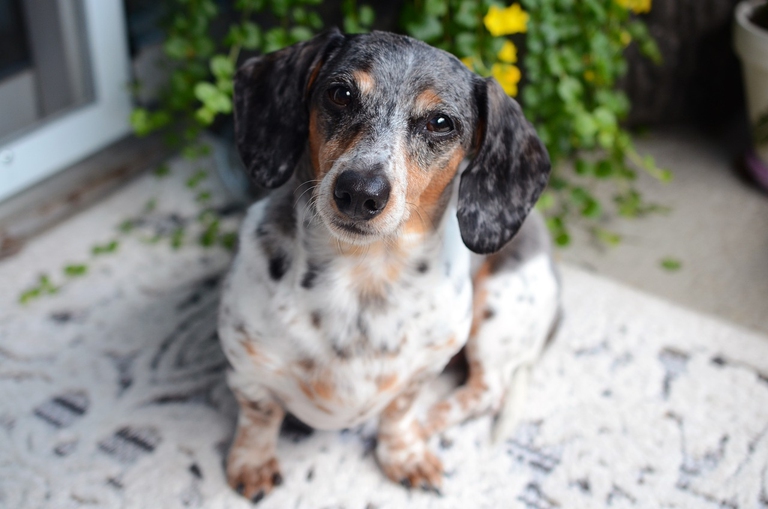
Character and practical life
The dachshund is a dog that loves to play, loves to run, explore and stay in close contact with the family and other dogs.In this context it does not differ much from other burrowing and hunting breeds.It is important, however, that the little dachshund has a correct education from a puppy which leads him to establish normal behavior and without predominant attitudes.Even if it doesn't seem like it from their size, they are in fact subjects with a strong character and a dominant personality.Be careful, therefore, if you choose the dachshund as your life partner and you have little time to dedicate to it with your family and during your free time.
As regards practical life and daily care, subjects of the breed must be followed specifically regarding their diet.A fat dachshund or one with too many extra kilos will, unfortunately, become a dog easily predisposed to the problems that afflict the breed.As regards daily maintenance, coat care differs depending on the type of fur.If you don't have time for a brush and comb, the best thing would be to choose a short hair variety.

The problems of selection
What are the main inconveniences that arise for dachshunds due to human selection?In this breed the major problem is given by chondrodystrophy that is, a typical morphology of some dog breeds also defined “chondrodystrophic races”.These are dogs that have particularly short limbs compared to the size of the trunk, with a characteristic sausage shape.In most cases they are specimens born from man's selection to be “hunting dogs”, or better “den dogs”.Their build was designed, in fact, to allow them to flush out game, easily slipping into the dens of hares, foxes and badgers.Over time, these "den dogs" have inappropriately become "apartment dogs", thanks to their often small size and the liveliness appreciated by families.Life in an apartment, however, is not congenial to them and generally causes health complications, given that the limbs have been significantly shortened at the expense of an increasingly longer trunk.All to adapt the size to the needs of easy daily management.
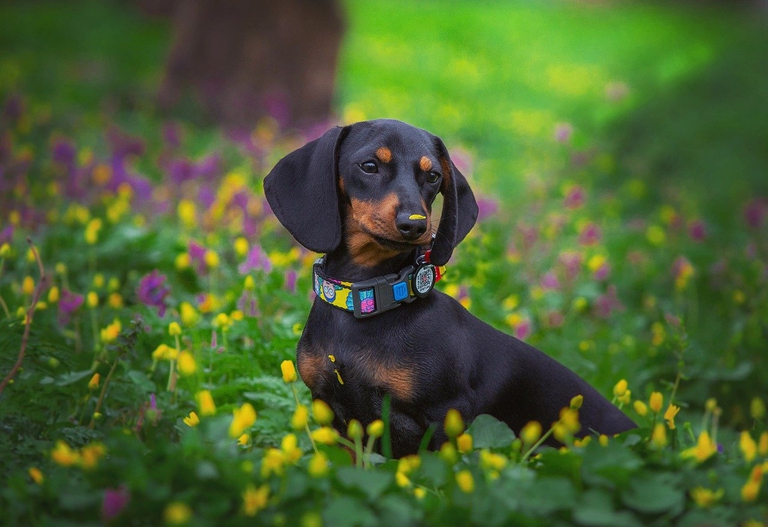
The expert, Dr., explains Francesco Miccoli, veterinary doctor and medical director of Reprovet ” The chondrodystrophy it is a disorder in the development of the cartilaginous matrix of the bone.The consequence is that the skeleton undergoes evident malformations, with variable severity depending on the location of the disorder.In this breed, anomalies affecting the intervertebral discs predispose to herniated discs with severe neurological consequences and often disabling for life (paralysis and/or paresis of the posterior train) causing profound suffering in those affected.Reason why in Germany they are considering banning their breeding, and many kennel club And breed club, with whom we collaborate, have developed differentiated and extensive protocols and databases available in Italy on request.
It is also necessary to point out that the exposure subjects are generally longer than the working subjects in the den and with a conformation of the lumbosacral region of the spine and of the muscles predisposing them to a greater risk of contracting herniated discs.On the other hand, there are few working subjects, so much so that the tests of this type on display are more of a palliative than a real aptitude for the den.It is simple to understand that by developing selection in this way, i.e. by not testing subjects for this pathology, it has spread more and more in the purebred population, so much so that it is difficult to find heterozygous subjects for this disease, especially in Italy, where it is the incidence of homozygous specimens is very high, with some exceptions in the few or very few working subjects".
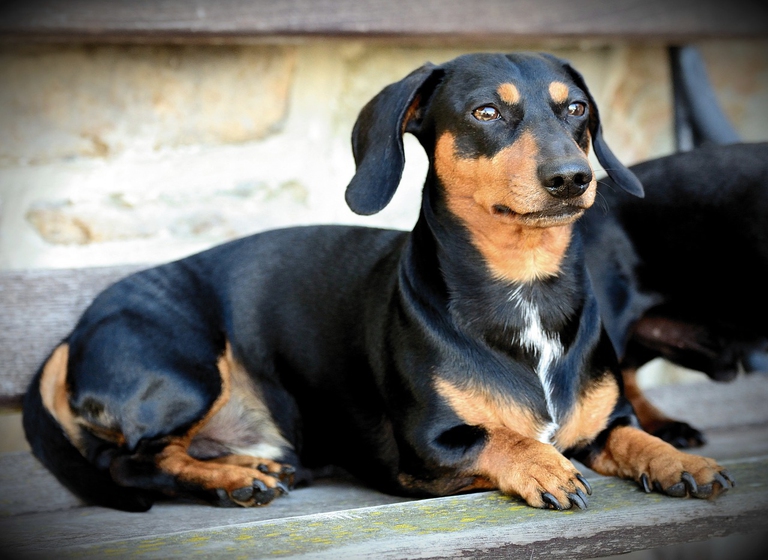
Dachshunds and slipped discs
The list of diseases to which dachshunds can be subject is long.Among the most relevant, those that concern the osteoarticular system, such as disc herniation.The doctor explains Alessandro Passalacqua, veterinary doctor who deals with physiatry and rehabilitationnAnd:“The dachshund's herniated disc is certainly considered a truly important problem both for young patients and for those who share their lives.The disease is due to a predisposition of the shape of the spine which is also induced by external and/or environmental factors, such as poor nutrition, poor physical activity (and, in this case, obesity problems are at the forefront ) and an inappropriate lifestyle.To illustrate, the spinal column is made up of vertebrae divided into cervical ones (C1-C7), thoracic (T1-T13), lumbar (L1-L7), sacrals and coccygeals, which are spaced from each other by shock-absorbing discs.If these discs are damaged or rupture, the consequence will be the leakage of the nucleus, thus generating a hernia and in the most serious cases, even spinal compression.
The most common symptoms of herniated disc in dogs are:
- acute pain
- Hind limb plegia (total absence of motor functions)
- paresis of the hind limbs (partial decrease in motility)
- loss/reduction of deep pain
- loss/reduction of reflexes
- loss/reduction of sensitivity
- impaired urination (the so-called neurological bladder)
- pain in the back and/or neck
- curved position of the back
- inability to stand up on hind legs
- pain when walking
In dachshunds, prevention is a must
As in other canine breeds and crossbreeds, herniated discs can also be prevented and successfully addressed.The expert continues:“At the forefront there are a series of measures to prevent the onset and worsening of the disease:
- Nutrition (the dog must absolutely not be obese or have extra pounds).
- Motor activities
- I swim
- Create a home environment suited to his aptitudes
- Avoid ladders or acrobatic jumps (perhaps put cushions under the sofas to cushion the backlash on the column)
- Improve the home surface (avoid smooth surfaces and increase the grip of the paws by inserting simple rubber mats)
- Encourage walks on the grass or on the shoreline
- Avoid holding the dachshund like a child (not lifting it by the armpits, but trying to keep the spine horizontal as much as possible, and holding it with one hand at the level of the pelvis and the other under the sternum)
In practice, however, dachshunds can lead a normal life like any other dog, even if you need to be slightly more careful in their management due to their particular morphology.

Recovery after illness
If a dachshund or any other dog should be affected by a herniated disc, it is necessary to immediately go to an appropriate structure such as veterinary centers which have within them a figure such as the neurologist/neurosurgeon, the only expert able to carry out a specific visit as soon as possible and evaluate the patient and his initial conditions.After this careful evaluation we tend to carry out a Magnetic resonance imaging / CT scan which can allow us to evaluate the type of damage that caused the hernia and its location, as well as understanding whether the spinal cord is altered or not.This is usually followed by neurosurgery to reduce and eliminate spinal cord compression.

A rescue for the breed
Precisely due to the incorrect definition of apartment dog, the dachshund, the hunting and den par excellence breed, is often abandoned due to its lively and overly active nature.Or worse, with the onset of an illness and the natural aging process, the dachshund plush mascot of children and families becomes a burden to be given up without much trouble.Therefore, an association was also created for this breed which deals with placing, treating and assisting abandoned subjects or those in need of specific care.We'll talk about it with the president of Rescue dachshunds, Paola Sutti, journalist and breed enthusiast, to try to draw up a more precise picture of abandonments relating to dachshunds:“ The answer would assume a statistic, which we are unable to do:certainly the feeling you have, reading the posts on social media, is that of being faced with an increase in property transfers.The Covid period has evidently generated a greater demand for puppies.The point is that the dachshund, although a splendid life companion, has needs due to its nature as a hunting dog and therefore of movement, as well as careful management, based on the relationship and its education.Relegating it to the home, considering only its small size, has led to dogs with strong character problems.Of course they really like sleeping on the sofa - from which they should never jump -, but they are like springs that must be able to release energy and not just in the 'walk' around the building.Another aspect that worries us is the rampant harlequin fashion, which should never be mated with each other, because crippled, blind or deaf puppies could be born.This is very important information, also to avoid that, in the coming years, rescues like ours find themselves invaded by poor creatures, born from ignorance of a fundamental rule in this breed and its derivatives".For more information: www.bassottiepoipiu.org

